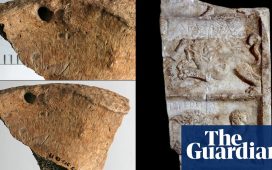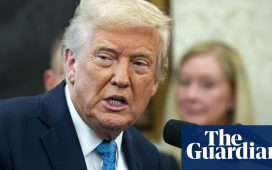The Transportation Security Administration has been testing use of facial recognition software to verify travelers’ identification at some airports. Use of the technology is voluntary, the TSA has told the public and Congress.
If you decline, a TSA agent is supposed to verify your identification, as we have done at airport security for years.
When Merkley said no to the face scan at Washington’s Reagan National Airport, he was told it would cause a significant delay, a spokeswoman for the senator said.
There was no delay. The spokeswoman said the senator showed his photo ID to the TSA agent and cleared security.
Is facial recognition technology really voluntary if a United States senator has trouble saying no?
The TSA is using facial recognition technology for a limited purpose that the agency says is accurate. As flying reaches record highs again this summer, the technology could improve safety and efficiency with fewer risks than controversial uses of facial recognition such as police trying to identify crime suspects from vast numbers of images.
But problems encountered by Merkley and others raise questions about whether the technology can be used fairly and how far it might spread in American life without true oversight.
Let’s discuss two topics:
- TSA’s face scanning is supposed to be optional for us. Is it, really?
- What are the potential benefits and drawbacks of the TSA’s use of facial recognition software?
How TSA’s face scanning works
At TSA security lanes of some airports, you might be asked to look into a camera that takes your photo. You will also scan your driver’s license or other photo identification.
Software compares the snapshot of your face to your ID photo to verify that the two match.
Other checks are happening, too, including making sure your ID is legitimate and whether you belong to a special screening status such as TSA PreCheck or requirements for extra security measures.
A TSA agent oversees this facial recognition ID verification and can do those security checks without the machine if there’s a problem.
Since Geoffrey A. Fowler, The Washington Post’s personal technology columnist, wrote about the TSA’s tests of facial recognition last December, its use has been expanded from 16 airports to 25.
(There’s a list below of the airports where you might encounter facial recognition. The software may not be used at every TSA lane at those airports.)
TSA wants to eventually use the technology for ID verification at more than 400 airports overseen by the agency.
TSA says this facial recognition system works even if your hairstyle or age are different from your ID photo. (More on accuracy in a minute.)
You are permitted to decline to have your photo taken for the facial recognition match. This TSA website for travelers says so explicitly. Instead a TSA agent will compare your face to your photo ID.
A TSA spokesman told me that if you say no, it won’t take you longer to clear airport security, and you won’t be subject to extra screening.
Merkley was told something different from what’s in TSA policy. And it wasn’t the only time that policy didn’t match reality.
Opting out of airport facial recognition
Tawana Petty, who has campaigned against police use of facial recognition software, said she was also flying out of Reagan National Airport in May and asked the TSA agent if it was optional to use the facial recognition camera at security.
The agent said it was required, according to Petty.
With a flight to catch and a line of people stacked up, Petty said she was reluctant to push back and went along with the facial recognition screening.
“If someone like me, who has been vocal about law enforcement use of facial recognition technology for years did not feel empowered to resist, I can’t imagine how disempowering the experience is for others,” Petty said.
Petty shared details of her airport experience with the Algorithmic Justice League, a group that raises awareness about the impact of AI, and repeated those details to me. I didn’t independently confirm her travel experience or that of Merkley.
In a statement, the TSA said it couldn’t comment on individual interactions at airport security without more details including the date and time of the trip.
“TSA is committed to protecting passenger privacy, civil rights, and civil liberties and ensuring the public’s trust as it seeks to improve the passenger experience through its exploration of identity verification technologies,” the agency said.
TSA had also previously told Merkley and other senators that notices are posted of travelers’ option to say no where facial recognition is being used. Merkley said that on a separate trip in May, he saw no such signs at Reagan National Airport.
“This needs to change immediately,” Merkley said. “The TSA says the facial scans are optional, but they are operating at Reagan National as if they are mandatory, providing no signs that indicate passengers have a right to opt out.”
The TSA said there are multiple signs at that airport.
The Algorithmic Justice League, which opposes the TSA’s use of facial recognition for domestic flights, is asking people to submit details of their encounters with the TSA face-scanning machines.
The nonprofit said most people who have responded so far said they didn’t know they could decline the facial recognition ID checks.
The TSA’s airport signs might not use the words “facial recognition,” but might refer to use of “digital identity verification technology” or “biometric identity verification technology.” The AJL said the signs should be explicit about use of facial recognition.
Separately, U.S. Customs and Border Protection uses facial recognition technology at some airport border crossings.
U.S. citizens and some other travelers are also entitled to decline to have their photos taken for facial recognition ID checks. You can ask for another way to verify your identification.
Do computers verify ID better than people?
Joy Buolamwini, founder of the Algorithmic Justice League who led pioneering research on facial recognition bias, said that given the risks to people’s privacy and safety, the TSA has no legitimate reason to use the technology in this way.
“I do not understand why the TSA needs to use facial recognition when there are other ways of checking travelers,” she said.
Some research has found that facial recognition technologies generally outdo humans at verifying that one high-quality image of a person matches another image of the same person, although accuracy varied widely depending on the circumstances.
Previous federal government analysis had found facial recognition systems misidentified people of color far more often than they did White people, although the disparity has narrowed in recent testing.
TSA has said facial recognition can improve safety, and it has cited a 97 percent accuracy rate for its face ID technology without discrepancies among people of different races. Most experts said that information alone doesn’t provide enough context.
Rep. Bennie G. Thompson (D-Miss.), the top Democrat on the committee that oversees the Department of Homeland Security including TSA, said he wants to see more testing and third-party verification of results from TSA’s use of facial recognition software.
Buolamwini wants the TSA to disclose which commercial software it is using and release full data on error rates, including by age, gender, race, skin color and their intersections.
The TSA declined to publicly disclose its analysis or how the accuracy compares with those of human TSA agents.
Even small error rates could affect many people. If the TSA software verified IDs for the nearly 2.3 million people it is screening on average each day, a 3 percent error rate translates into more than 68,000 people a day.
If you believe the facial recognition machines messed up your ID check, you can request a TSA agent to do the verification, the agency said.
The TSA also said if you have problems or complaints with security screenings, you can report your experience to customer service at (866) 289-9673.
Airports where the TSA is testing facial recognition ID verification (in alphabetical order by city name and including airport code)
Baltimore-Washington (BWI)
Cedar Rapids, Iowa (Eastern Iowa Airport, CID)
Cincinnati-Northern Kentucky (CVG)
Gulfport-Biloxi, Miss. (GPT)
San Juan, Puerto Rico (SJU)











